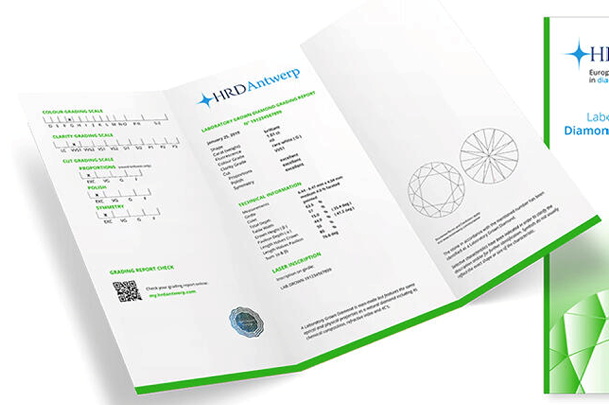
Belgium’s HRD lab says it will no longer grade lab grown diamonds.
It wants to create what it calls a “clear distinction between natural and synthetic diamonds”.
HRD, a subsidiary of the Antwerp World Diamond Centre (AWDC), says it is the first lab to stop lab grown certification, although it will still issue certificates for jewelry containing lab growns.
The move, announced yesterday (18 June) follows GIA’s decision earlier this month to grade lab growns only as “premium” or “standard”, without scores for color or clarity.
It further emphasizes the distinction between natural and lab grown diamonds.
“As of 2026, we will no longer issue quality certificates for loose synthetic diamonds intended for commercial use,” said Ellen Joncheere, CEO of HRD Antwerp.
“In limited cases, we will continue to analyze synthetic diamonds, but strictly for research purposes. Jewellery containing synthetic stones will still be eligible for certification.”
HRD started grading lab growns in 2013, albeit with fewer grades of color and clarity than natural diamonds. In 2019 it aligned lab growns with natural stones, a move that appeared to signal greater parity between the two sectors.
Karen Rentmeesters, CEO of parent company AWDC, said: “By becoming the first diamond lab in the world to take an explicit and exclusive stance in favour of natural diamonds, HRD Antwerp is sending a strong signal.
“A clear distinction between natural and synthetic diamonds is essential to strengthen consumer trust and help safeguard the future of natural diamonds.”
Source: IDEX
